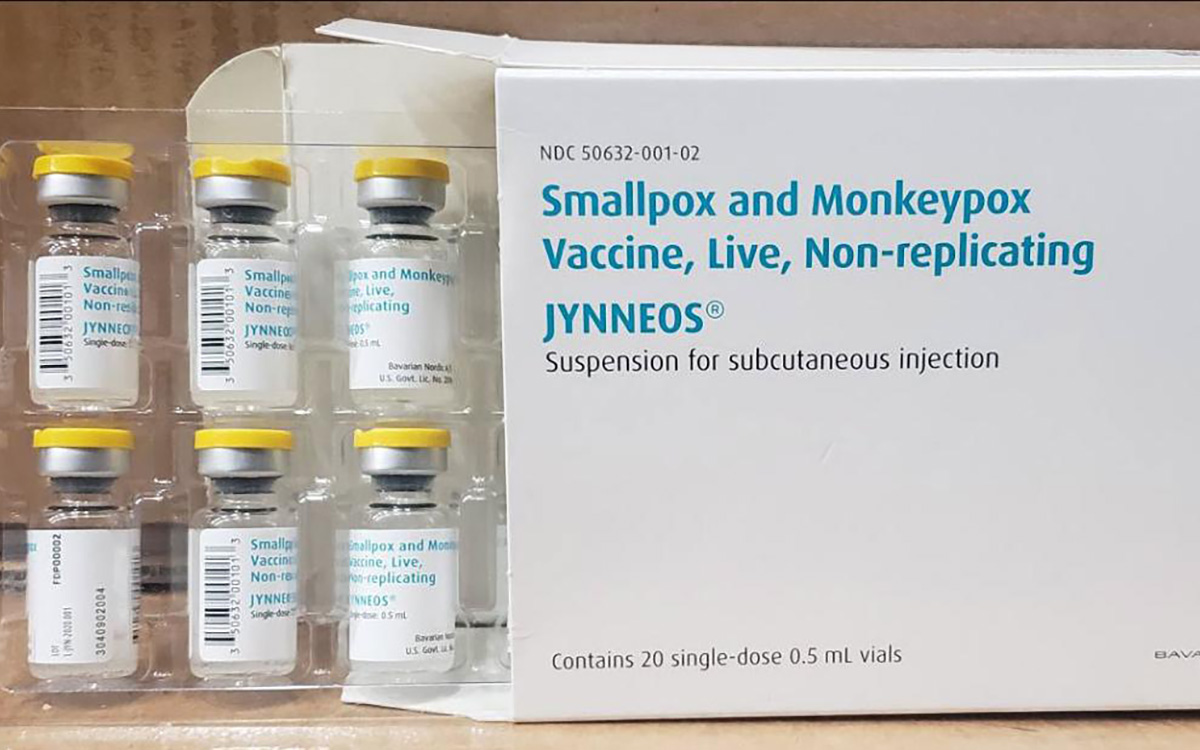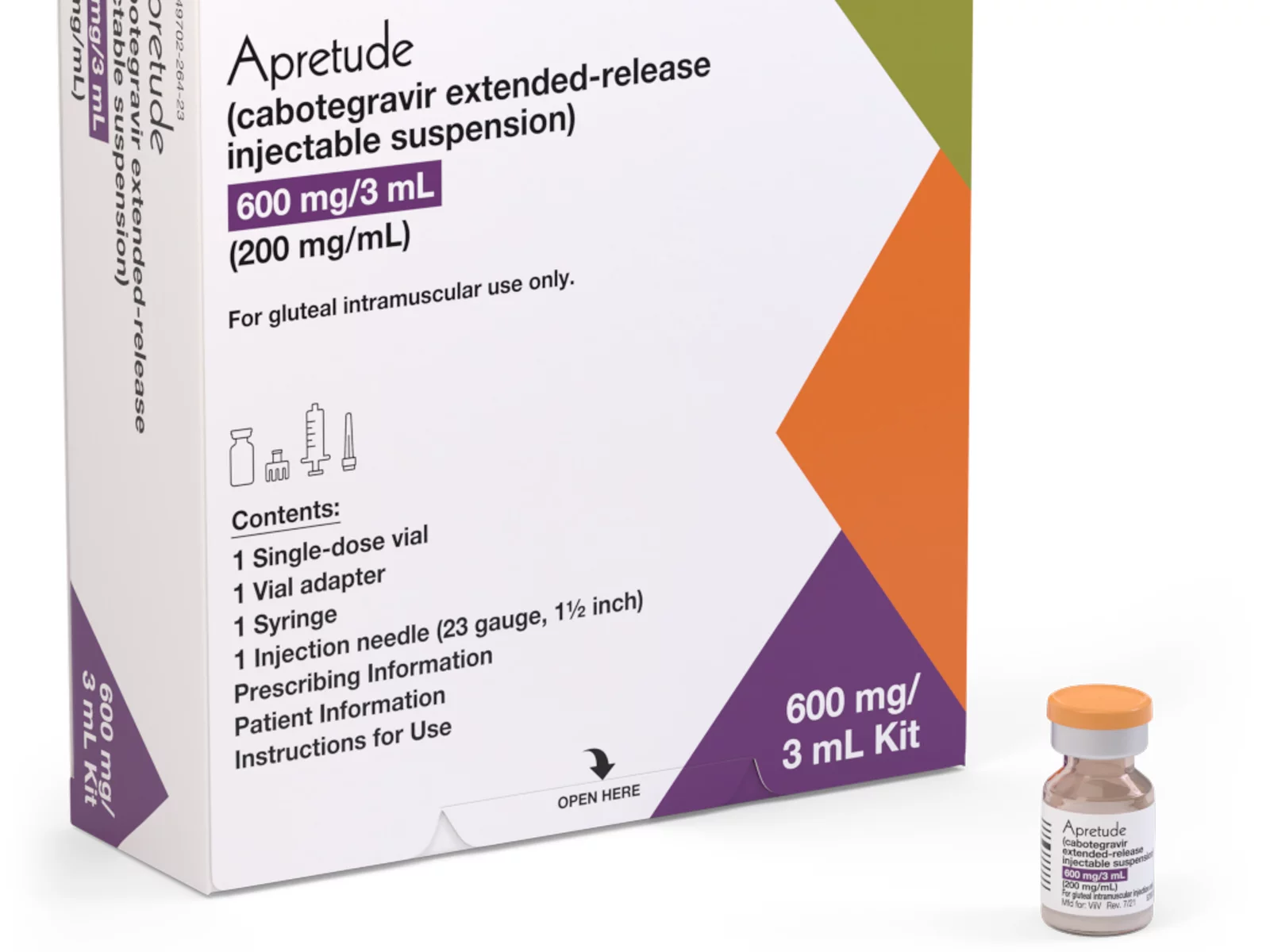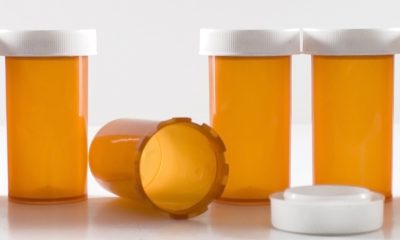Health
‘The numbers are staggering’
14 percent of gay, bi men in D.C. have HIV: study
Local activists and health officials this week called for new approaches in HIV prevention following a city study that shows 14 percent of tested gay and bisexual men were HIV positive and 25 percent of black gay male participants were positive.
During a March 29 town hall meeting organized by the D.C. Center for the LGBT community to discuss the study’s findings, a number of AIDS activists noted the study included a sample of just 500 male respondents and did not cover the full demographics of all men who have sex with men.
But most activists speaking at the forum said the study reveals a number of important new findings showing high-risk behavior among those sampled and should not be dismissed because it’s less than perfect.
“Because we’ve determined that it is not a truly representative sample due to methodological limitations of the research, we can’t say that 14 percent of D.C.’s gay [and men who have sex with men] population is HIV positive,” said Daniel O’Neill, chair of the D.C. Center’s HIV Prevention Working Group.
“The reality: It’s probably far worse than 14 percent, as the data is both dated and under-represents some of the most at-risk subgroups.”
Dr. Shannon Hader, director of the D.C. HIV/AIDS Administration, opened the town hall meeting with a 45-minute presentation explaining the study’s findings and comparing it to existing city data on HIV prevalence among MSM, homosexuals and injection drug users, the three key groups used by researchers to measure the AIDS epidemic.
Hader and O’Neill were among five panelists who spoke at the town hall meeting and fielded questions from about 50 people who attended. The other panelists included Jose Gutierrez, a gay Latino activist affiliated with La Clinica Del Pueblo, a D.C. clinic that provides services to people with HIV/AIDS; Ken Pettigrew, director of programs for Us Helping Us, a local AIDS advocacy group that provides services for mostly black gay men; and Calvin Gerald, an organizer with the D.C. Center’s HIV Prevention Working Group.
Hader’s presentation followed the city’s release of the study’s findings March 26 at a news conference outside the Wanda Alston House for LGBT youth in Northeast D.C.
A first-of-its-kind look into the behavior of men who have sex with men in the District of Columbia, the study’s main finding was that 14 percent of those sampled were HIV positive. The figure represents an HIV-positive rate nearly five times higher than the 3 percent HIV infection rate among all adults and teens in the city, according to separate data gathered by the HIV/AIDS Administration.
The MSM study also found that black men who have sex with men, who participated in the study, had an HIV infection rate of 25 percent, compared to an 8 percent infection rate among white MSM who participated in the study.
“The numbers are staggering, but they are changeable,” says a report accompanying the study, which was conducted for the city by George Washington University’s School of Public Health and Health Services. “We are convinced that there are no foregone conclusions to getting HIV for men who have sex with men.”
Although gay and AIDS activists attending Monday’s town hall meeting said the high HIV positive rate findings among MSM did not surprise them, some expressed surprise and puzzlement over other findings. Among them are that men under age 30 “generally had safer sex behaviors” while men over 30 “got tested less and used condoms less and had more sex partners.”
The study also found that more than 40 percent of the men participating did not use a condom at the time of their last sexual encounter and more than one-third did not know the HIV status of their last sex partner.
Another development that came as a surprise to many activists, more than half of the study’s participants reported an annual income of $50,000 or greater, an education significantly higher than a high school degree, and were believed to be “socially connected” with the LGBT community.
Hader and some of the AIDS activists attending the town hall meeting said this suggests that many gay men who should be aware of the need for greater condom use and overall less risky behaviors were nevertheless continuing to engage in risky behavior.
In a finding said to highlight a seeming paradox among black MSM, the study found that black MSM of all ages used condoms more frequently than whites. Yet the infection rate for black MSM remains high, the report says, most likely because the number of infected black MSM is significantly higher than white MSM, increasing the chance of infection even if safer sex is practiced most of the time.
“Though white men were more likely to engage in higher risk sexual behavior, more men of color were impacted by HIV,” says the report.
The report also notes that, “Contrary to some perceptions, younger men generally had safer sex behaviors, while older men got tested less and used condoms less and had more sex partners.”
The study found that about 66 percent of black MSM reported using a condom during their most recent instance of anal sex, compared to about 47 percent of white MSM.
Hader said the study was conducted using protocols established by the U.S. Centers for Disease Control & Prevention for similar studies in other cities.
She said that similar MSM studies will be conducted every three years, alternating with studies of HIV-related heterosexual sexual behavior and studies of injection drug users conducted.
“The data are the data are the data,” she said at the town hall meeting. “They’re not the whole picture or the only picture, but they’re really useful information.
“And they’re not the answers So my hope is our data is to be used to start to come up with the answers, to reinforce anything we think we’re on the right track on, to bring up new ideas.”
‘We have more work to do’
D.C. Mayor Adrian Fenty joined Hader and other officials with the Department of Health and its HIV/AIDS Administration at the news conference March 26 announcing the release of the study.
D.C. Council member David Catania (I-At Large), who chairs the D.C. City Council’s Committee on Health, also participated in the news conference. He praised Fenty and Hader for working hard during the past three years to transform what he called a highly flawed public health data gathering system into a “world class” system recognized and praised by health departments in other cities and states.
Fenty joined Hader and Dr. Pierre Vigilance, director of the D.C. Department of Health, in noting that the study’s troubling findings of high HIV infection rates among MSM were offset by what they said were highly useful new data generated by the study.
“Knowing the facts about our HIV/AIDS epidemic improves how we fight this disease,” Fenty said.
Pointing to a separate study released last week, he noted that, “we’ve already shown that we can make progress against HIV by reducing AIDS cases and deaths and increasing people getting into medical care.”
“This study shows that we have more work to do to fight HIV/AIDS among men who have sex with men,” he said.
The D.C. MSM study consisted of 500 participants who were recruited “at open air venues, gyms, bars, restaurants, and clubs where men who have sex with men tend to frequent,” says the study report. “Participants were interviewed at these venues, which were located in Wards 1, 2, 5, 6 and 8.”
The study, which was conducted in 2008, doesn’t identify the specific venues, and representatives of the GWU team that conducted the survey declined at the news conference to disclose the names of the venues.
The report acknowledges that the study did not reach all MSM and most likely under-represents some groups, including MSM who don’t identify as gay or bisexual, and younger white MSM.
It notes that of the nearly 100 white men under age 30 who participated in the study, none were found to be HIV positive.
Vigilance and Hader said that while most of the MSM participants in the study reported having been tested for HIV, 40 percent did not know they were HIV positive until they were tested at the time of the study. Among those who tested positive during the study, nearly three-quarters had seen a doctor or other health care provider at least once in the previous 12 months, but were not tested.
Vigilance and Hader noted that a D.C. public health policy established four years ago calls for all adults in the city to be tested routinely for HIV during regular doctor visits, just as they are tested for high blood pressure and diabetes.
As a result of the study’s findings, Vigilance said the health department is calling on MSM to be tested for HIV twice a year instead of the once-a-year recommendation made four years ago.
Hader also announced at the press conference that the Department of Health is launching a new MSM HIV screening project in partnership with the Whitman-Walker Clinic and the Crew Club, a gay male gym and social venue.
According to Hader, the yearlong project will screen about 500 men at the Crew Club considered to be at high risk for HIV. She said pharmaceutical company Gilead Sciences, Inc., is contributing $40,000 to the project and the Crew Club is contributing more than $5,000 along with special accommodations on its premises to conduct the screening.
She said that while the 14 percent HIV infection rate among MSM in D.C. is too high, previous MSM studies in Baltimore, Los Angeles, Miami, New York and San Francisco found a combined infection rate of 25 percent in 2005. She noted that in Baltimore, the MSM infection rate was found to be 40 percent.
‘What are we doing wrong?’
The panelists who joined Hader at the town hall meeting and members of the audience expressed differing views on whether existing HIV prevention programs in the city, including those operated by community organizations like Us Helping Us and the Whitman-Walker Clinic, have been effective in their mission.
“There is a notion to say what are we doing wrong?” said Pettigrew of Us Helping Us. “But you can also ask, ‘What are we doing right?’”
He noted that one of the key findings in the MSM study was that men under 30 years old had a lower rate of HIV infection and were engaging in less risky behavior.
Ernest Hopkins, a veteran AIDS activist involved with programs in D.C. and San Francisco, said the D.C. government has been less aggressive and less visible in its AIDS prevention messages than in the past. He and D.C. Center Executive Director David Mariner called for greater city funding for community based HIV programs, including programs organized by the Center.
AIDS activist Chris Lane, a former official with the Sexual Minority Youth Assistance League, noted that a mental health component appeared to be missing from the MSM study.
Hader said the full scientific report on the study, which is to be published soon on the Department of Health’s web site, discusses mental health-related issues and that the city would pursue these issues when its reviews its overall HIV prevention programs in the next few months.
Gerald of the Center’s HIV Prevention Working Group cautioned against placing all the responsibility of HIV prevention on the city. He expressed concern that not enough black gay men have attended meetings and planning sessions to address the issue.
“We should not just wait for the government to do something,” he said. “We should educate our own people in the black community. We can let the government go so far, but we have to take it up from there.”
The study, titled “MSM in D.C.: A Life Long Commitment to Stay HIV Free,” is available through the Department of Health’s website, www.doh.dc.gov.
Monkeypox
US contributes more than $90 million to fight mpox outbreak in Africa
WHO and Africa CDC has declared a public health emergency

The U.S. has contributed more than $90 million to the fight against the mpox outbreak in Africa.
The U.S. Agency for International Development on Tuesday in a press release announced “up to an additional” $35 million “in emergency health assistance to bolster response efforts for the clade I mpox outbreak in Central and Eastern Africa, pending congressional notification.” The press release notes the Biden-Harris administration previously pledged more than $55 million to fight the outbreak in Congo and other African countries.
“The additional assistance announced today will enable USAID to continue working closely with affected countries, as well as regional and global health partners, to expand support and reduce the impact of this outbreak as it continues to evolve,” it reads. “USAID support includes assistance with surveillance, diagnostics, risk communication and community engagement, infection prevention and control, case management, and vaccination planning and coordination.”
The World Health Organization and the Africa Centers for Disease Control and Prevention last week declared the outbreak a public health emergency.
The Washington Blade last week reported there are more than 17,000 suspected mpox cases across in Congo, Uganda, Kenya, Rwanda, and other African countries. The outbreak has claimed more than 500 lives, mostly in Congo.
Health
Mpox outbreak in Africa declared global health emergency
ONE: 10 million vaccine doses needed on the continent

Medical facilities that provide treatment to gay and bisexual men in some East African countries are already collaborating with them to prevent the spread of a new wave of mpox cases after the World Health Organization on Wednesday declared a global health emergency.
The collaboration, both in Uganda and Kenya, comes amid WHO’s latest report released on Aug. 12, which reveals that nine out of every 10 reported mpox cases are men with sex as the most common cause of infection.
The global mpox outbreak report — based on data that national authorities collected between January 2022 and June of this year — notes 87,189 of the 90,410 reported cases were men. Ninety-six percent of whom were infected through sex.
Sexual contact as the leading mode of transmission accounted for 19,102 of 22,802 cases, followed by non-sexual person-to-person contact. Genital rash was the most common symptom, followed by fever and systemic rash.
The WHO report states the pattern of mpox virus transmission has persisted over the last six months, with 97 percent of new cases reporting sexual contact through oral, vaginal, or anal sex with infected people.
“Sexual transmission has been recorded in the Democratic Republic of Congo among sex workers and men who have sex with men,” the report reads. “Among cases exposed through sexual contact in the Democratic Republic of the Congo, some individuals present only with genital lesions, rather than the more typical extensive rash associated with the virus.”
The growing mpox cases, which are now more than 2,800 reported cases in at least 13 African countries that include Kenya, Uganda, Rwanda, and prompted the Africa Centers for Disease Control and Prevention this week to declare the disease a public health emergency for resource mobilization on the continent to tackle it.
“Africa has long been on the frontlines in the fight against infectious diseases, often with limited resources,” said Africa CDC Director General Jean Kaseya. “The battle against Mpox demands a global response. We need your support, expertise, and solidarity. The world cannot afford to turn a blind eye to this crisis.”
The disease has so far claimed more than 500 lives, mostly in Congo, even as the Africa CDC notes suspected mpox cases across the continent have surged past 17,000, compared to 7,146 cases in 2022 and 14,957 cases last year.
“This is just the tip of the iceberg when we consider the many weaknesses in surveillance, laboratory testing, and contact tracing,” Kaseya said.
WHO, led by Director General Tedros Adhanom Ghebreyesus, also followed the Africa CDC’s move by declaring the mpox outbreak a public health emergency of international concern.
The latest WHO report reveals that men, including those who identify as gay and bisexual, constitute most mpox cases in Kenya and Uganda. The two countries have recorded their first cases, and has put queer rights organizations and health care centers that treat the LGBTQ community on high alert.
The Uganda Minority Shelters Consortium, for example, confirmed to the Washington Blade that the collaboration with health service providers to prevent the spread of mpox among gay and bisexual men is “nascent and uneven.”
“While some community-led health service providers such as Ark Wellness Clinic, Children of the Sun Clinic, Ice Breakers Uganda Clinic, and Happy Family Youth Clinic, have demonstrated commendable efforts, widespread collaboration on mpox prevention remains a significant gap,” UMSC Coordinator John Grace stated. “This is particularly evident when compared to the response to the previous Red Eyes outbreak within the LGBT community.”
Grace noted that as of Wednesday, there were no known queer-friendly health service providers to offer mpox vaccinations to men who have sex with men. He called for health care centers to provide inclusive services and a more coordinated approach.
Although Grace pointed out the fear of discrimination — and particularly Uganda’s Anti-Homosexuality Act — remains a big barrier to mpox prevention through testing, vaccination, and treatment among queer people, he confirmed no mpox cases have been reported among the LGBTQ community.
Uganda so far has reported two mpox cases — refugees who had travelled from Congo.
“We are for the most part encouraging safer sex practices even after potential future vaccinations are conducted as it can also be spread through bodily fluids like saliva and sweat,” Grace said.
Grace also noted that raising awareness about mpox among the queer community and seeking treatment when infected remains a challenge due to the historical and ongoing homophobic stigma and that more comprehensive and reliable advocacy is needed. He said Grindr and other digital platforms have been crucial in raising awareness.
The declarations of mpox as a global health emergency have already attracted demand for global leaders to support African countries to swiftly obtain the necessary vaccines and diagnostics.
“History shows we must act quickly and decisively when a public health emergency strikes. The current Mpox outbreak in Africa is one such emergency,” said ONE Global Health Senior Policy Director Jenny Ottenhoff.
ONE is a global, nonpartisan organization that advocates for the investments needed to create economic opportunities and healthier lives in Africa.
Ottenhoff warned failure to support the African countries with medical supplies needed to tackle mpox would leave the continent defenseless against the virus.
To ensure that African countries are adequately supported, ONE wants governments and pharmaceutical companies to urgently increase the provision of mpox vaccines so that the most affected African countries have affordable access to them. It also notes 10 million vaccine doses are currently needed to control the mpox outbreak in Africa, yet the continent has only 200,000 doses.
The Blade has reached out to Ishtar MSM, a community-based healthcare center in Nairobi, Kenya, that offers to service to gay and bisexual men, about their response to the mpox outbreak.
Health
White House urged to expand PrEP coverage for injectable form
HIV/AIDS service organizations made call on Wednesday

A coalition of 63 organizations dedicated to ending HIV called on the Biden-Harris administration on Wednesday to require insurers to cover long-acting pre-exposure prophylaxis (PrEP) without cost-sharing.
In a letter to Chiquita Brooks-LaSure, administrator of the Centers for Medicare and Medicaid Services, the groups emphasized the need for broad and equitable access to PrEP free of insurance barriers.
Long-acting PrEP is an injectable form of PrEP that’s effective over a long period of time. The FDA approved Apretude (cabotegravir extended-release injectable suspension) as the first and only long-acting injectable PrEP in late 2021. It’s intended for adults and adolescents weighing at least 77 lbs. who are at risk for HIV through sex.
The U.S. Preventive Services Task Force updated its recommendation for PrEP on Aug. 22, 2023, to include new medications such as the first long-acting PrEP drug. The coalition wants CMS to issue guidance requiring insurers to cover all forms of PrEP, including current and future FDA-approved drugs.
“Long-acting PrEP can be the answer to low PrEP uptake, particularly in communities not using PrEP today,” said Carl Schmid, executive director of the HIV+Hepatitis Policy Institute. “The Biden administration has an opportunity to ensure that people with private insurance can access PrEP now and into the future, free of any cost-sharing, with properly worded guidance to insurers.”
Currently, only 36 percent of those who could benefit from PrEP are using it. Significant disparities exist among racial and ethnic groups. Black people constitute 39 percent of new HIV diagnoses but only 14 percent of PrEP users, while Latinos represent 31 percent of new diagnoses but only 18 percent of PrEP users. In contrast, white people represent 24 percent of HIV diagnoses but 64 percent of PrEP users.
The groups also want CMS to prohibit insurers from employing prior authorization for PrEP, citing it as a significant barrier to access. Several states, including New York and California, already prohibit prior authorization for PrEP.
Modeling conducted for HIV+Hep, based on clinical trials of a once every 2-month injection, suggests that 87 percent more HIV cases would be averted compared to daily oral PrEP, with $4.25 billion in averted healthcare costs over 10 years.
Despite guidance issued to insurers in July 2021, PrEP users continue to report being charged cost-sharing for both the drug and ancillary services. A recent review of claims data found that 36 percent of PrEP users were charged for their drugs, and even 31 percent of those using generic PrEP faced cost-sharing.
The coalition’s letter follows a more detailed communication sent by HIV+Hepatitis Policy Institute to the Biden administration on July 2.
Signatories to the community letter include Advocates for Youth, AIDS United, Equality California, Fenway Health, Human Rights Campaign, and the National Coalition of STD Directors, among others.
-

 U.S. Supreme Court2 days ago
U.S. Supreme Court2 days agoSupreme Court to consider bans on trans athletes in school sports
-

 Out & About2 days ago
Out & About2 days agoCelebrate the Fourth of July the gay way!
-

 Virginia2 days ago
Virginia2 days agoVa. court allows conversion therapy despite law banning it
-

 New York5 days ago
New York5 days agoTwo teens shot steps from Stonewall Inn after NYC Pride parade












